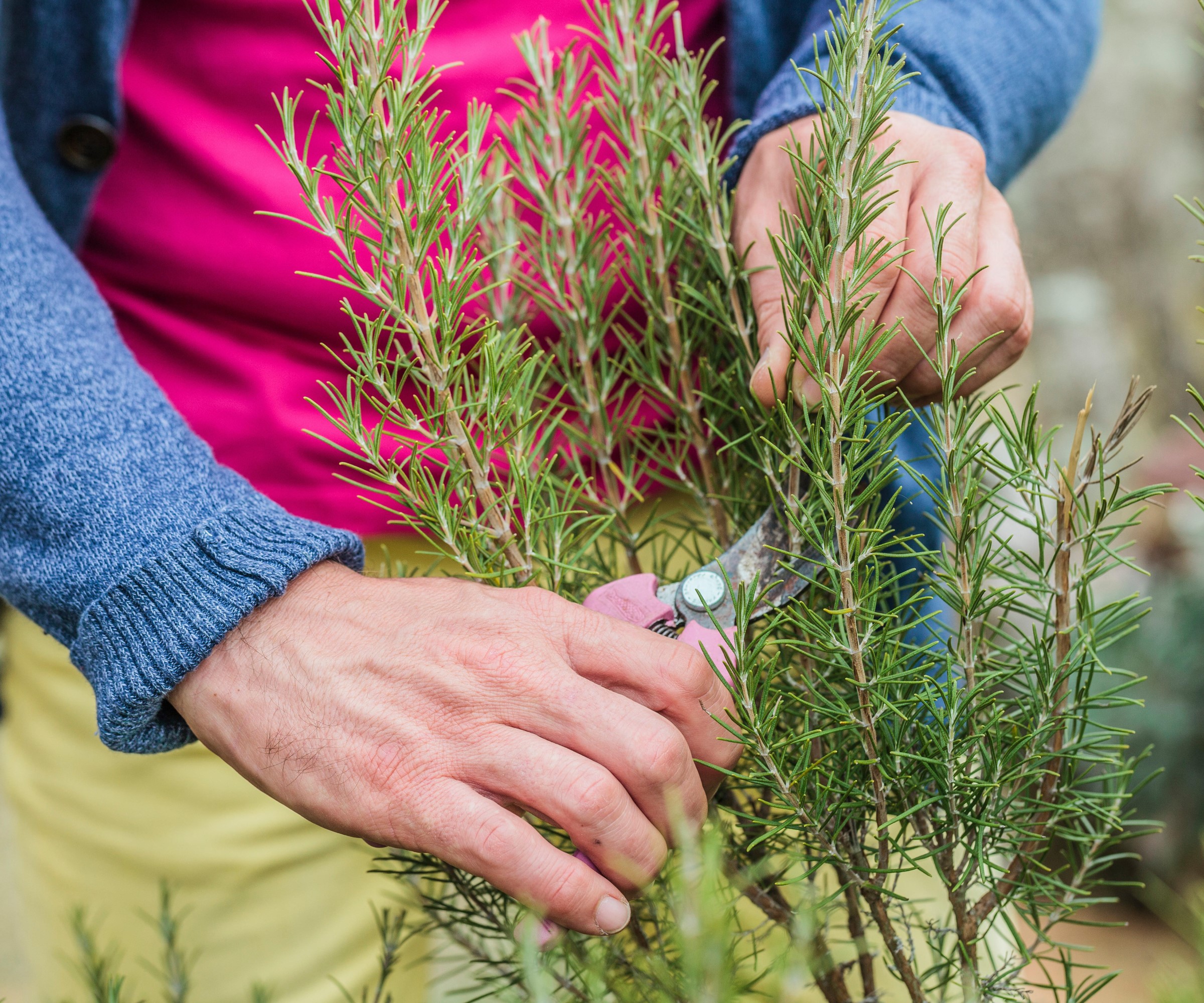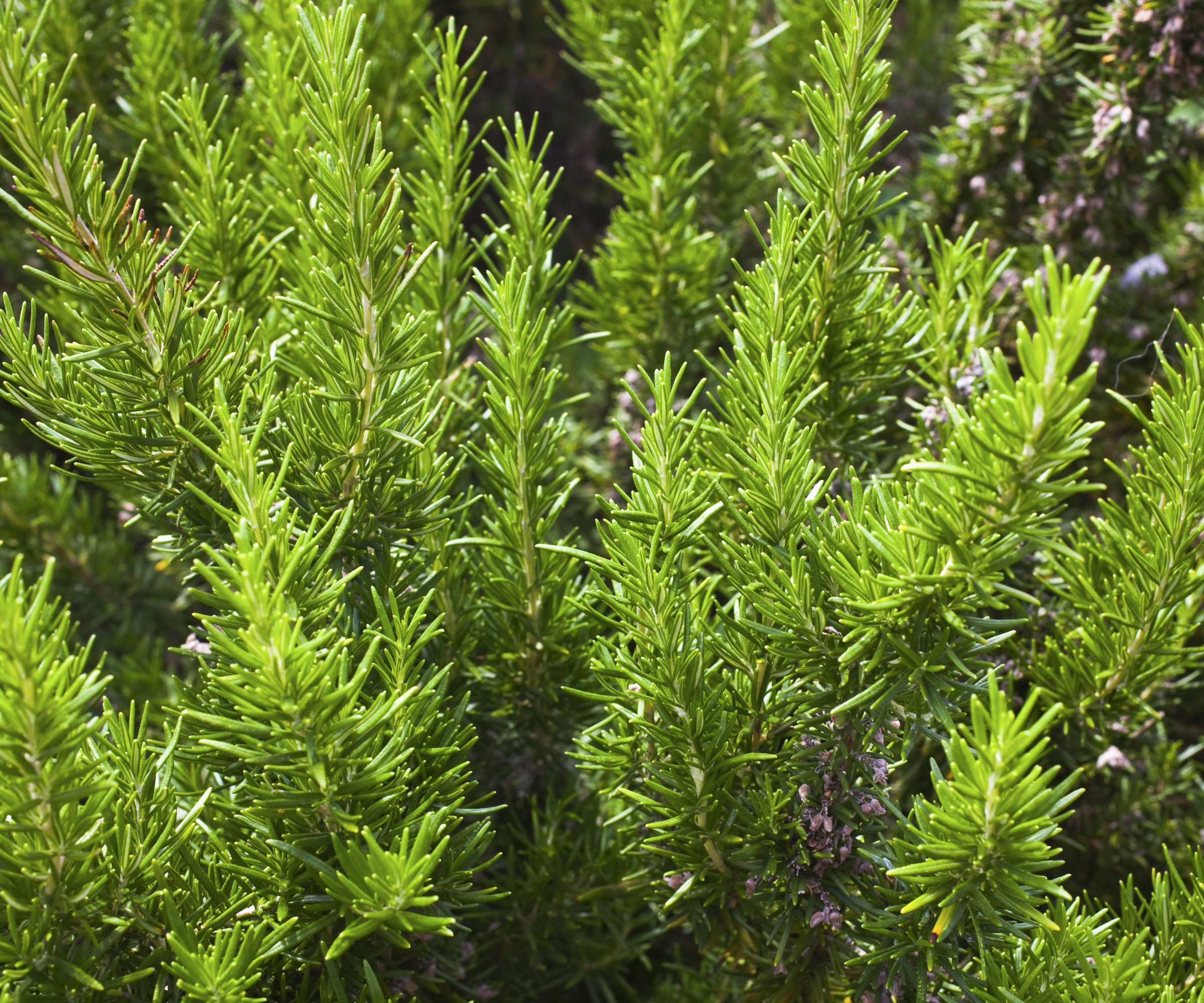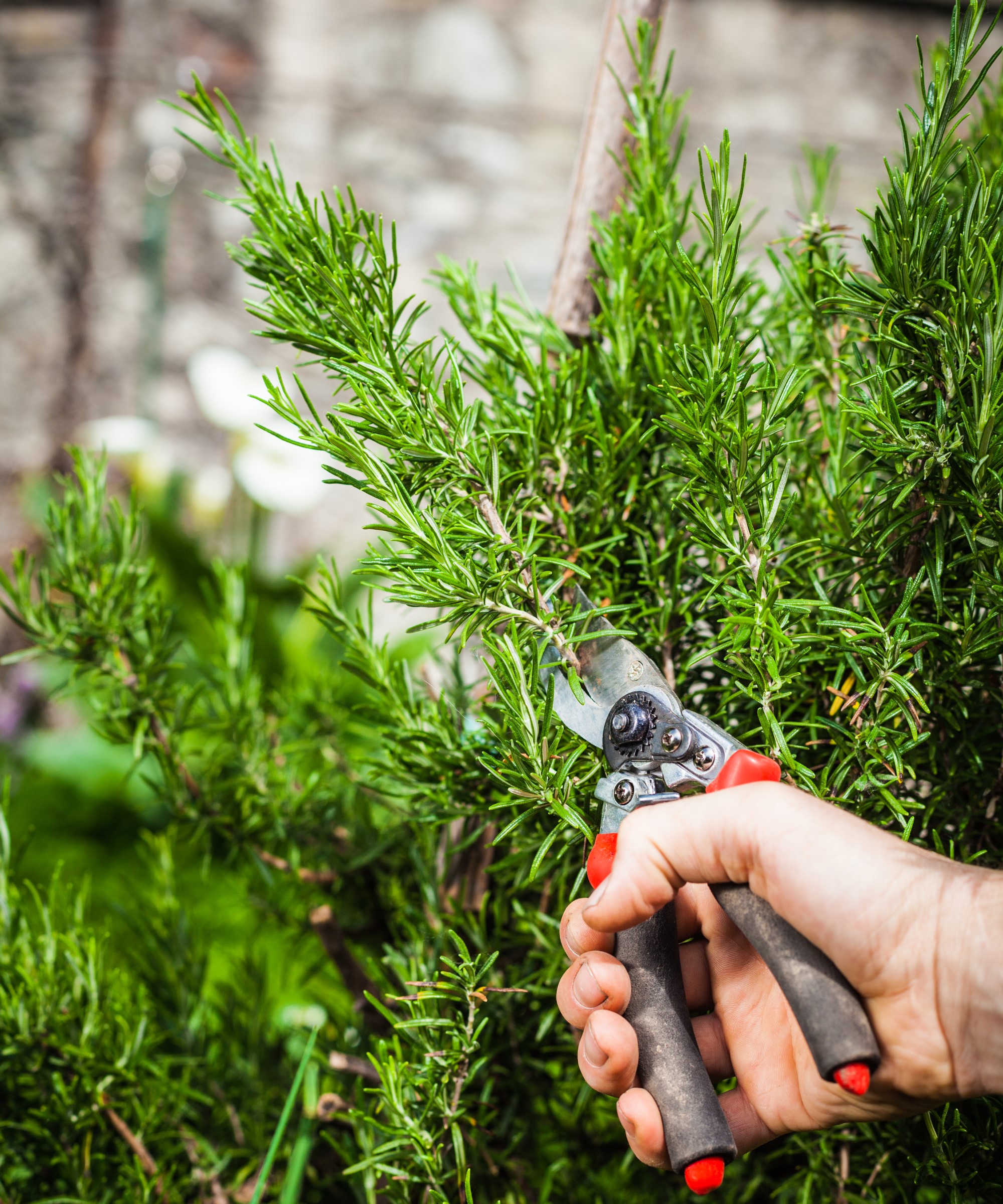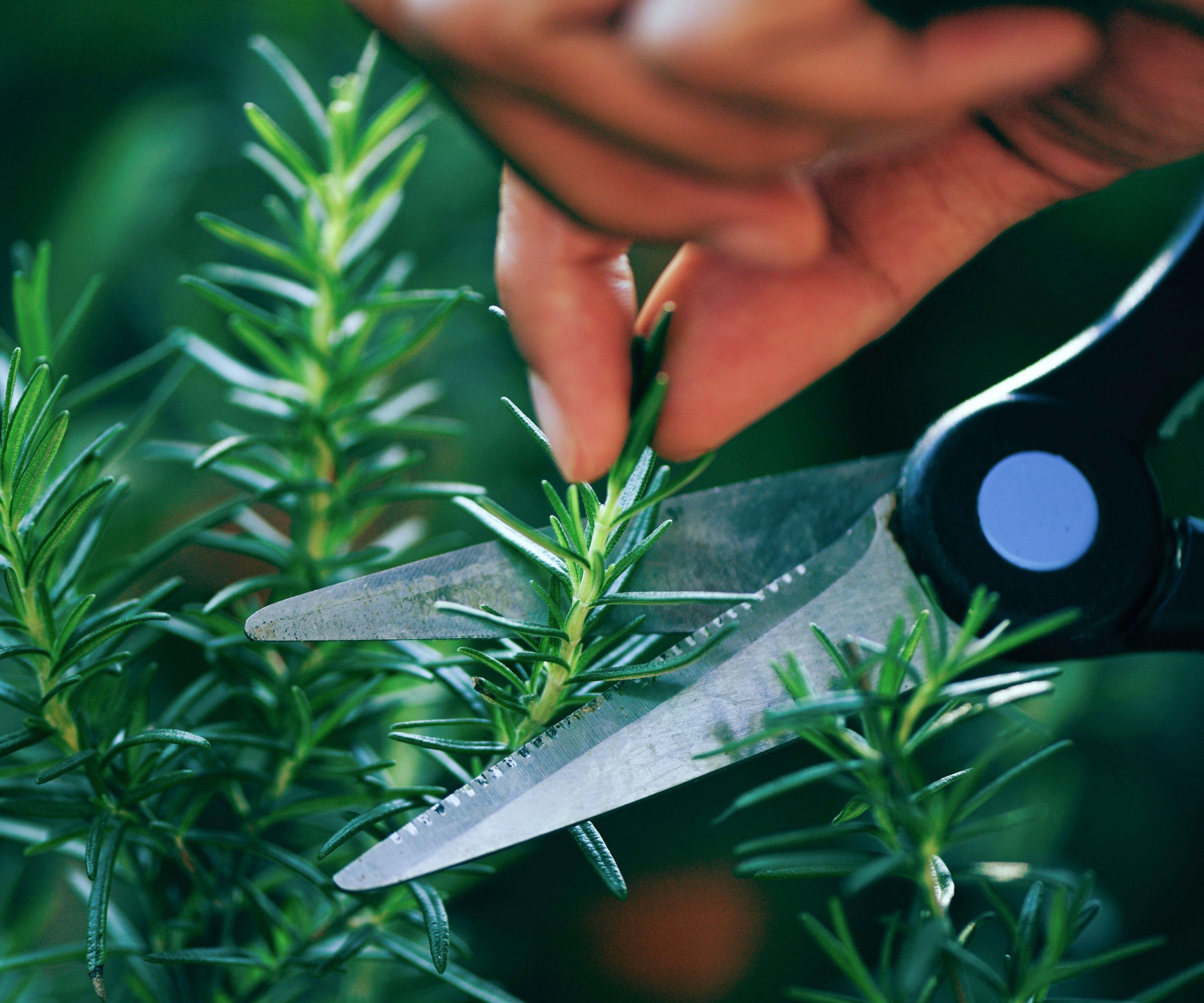How to prune rosemary – expert tips to complete this essential task
Rosemary is a fantastic aromatic evergreen garden shrub that needs to be lightly pruned every year to keep it compact


Pruning rosemary is a simple task to complete and one that requires only a few tools. You can easily keep this evergreen aromatic herb looking neat with a quick prune each spring.
By simply shortening stems to the desired length, and removing older and excessive growth, you can easily keep any rosemary plant in check, looking healthy, and remaining productive for several years.
When considering growing rosemary, be aware that it is a shrub that can quickly get long and woody if not pruned and it is then not a simple task to wrestle back control. However, a quick snip annually can help you control the shape or even create a bushier plant to give you more aromatic leaves for all your culinary needs.

Rosemary pruning needs to be done just once a year to keep a bush looking neat
Tools to prune rosemary
To prune a rosemary bush you will need just a few simple gardening tools. Use a pair of pruning shears to do the majority of the cutting, while a pair of garden loppers may be required to cut through any older and thicker branches.
Before doing any pruning, make sure that you use clean garden tools and your pruning shears are clean and sharp. Using dirty and blunt tools is a common pruning mistake to avoid, by using sharp tools you make clean cuts and the plant will not be left at risk of disease.
An example of a great piece of kit to sharpen pruning shears is the Felco Sharpening Tool available at Amazon, which I used for many years during my time as a professional gardener – when I pruned lots of rosemary in the kitchen gardens I worked in.

If you don't take out the tools and prune rosemary, a bush can quickly get woody and scruffy
How to prune rosemary
The best time to prune rosemary is during the spring or summer, at a time when it is growing strongly and after their blooms have faded. You do not want to prune rosemary in cooler weather as it will become too tender, so pruning in warmer temperatures is recommended and they should absolutely not be pruned after six weeks before the first frosts are due for your area.
Design expertise in your inbox – from inspiring decorating ideas and beautiful celebrity homes to practical gardening advice and shopping round-ups.
Thankfully, pruning rosemary plants is one of the more simple herb garden maintenance tasks and to start simply use sharp pruning shears to remove the old flowers. Then you can assess the state of the rosemary bush and then continue by removing all dead, damaged, crossing, or diseased branches out of the plant.
Then it is the case of simply shortening all of the long stems, often there is little more work involved than giving it a light trim back to the size and shape that you desire. As John Negus, gardening expert, explains: ‘Merely shorten questing and intrusive shoots to an accommodating length, ideally cutting to a side stem. Also shorten old, woody growth at the same time to help rejuvenate the bush.’
Always make a clean cut at a 45 degree angle when pruning and regularly wipe your blades clean to prevent sap building up on them and affecting their cutting. You can cut branches back by up to 50 per cent, but be careful to not cut back into old wood so make sure there are several sets of leaves beneath your cut.
Pruning can also help to keep the rosemary bush healthy, primarily helping protect them from fungal diseases that like moist and humid conditions.
John Negus adds: ‘Help your plant withstand fungal infections by maintaining good air circulation around and through the bush. Remove any weeds or leaves and branches of other plants that are touching it, and prune out any straggly old branches within the bush.’
He recommends that you follow-up your rosemary pruning by feeding the bushes monthly with an organic fertilizer, such as fish, blood and bone meal or seaweed. One example is the Sea Magic Organic Growth Activator from Burpee, which is a dry soluble seaweed extract that can be used all round the garden, including on rosemary.

John has been a garden journalist for over 50 years and regularly answers readers' questions in Amateur Gardening magazine, including many about evergreen shrubs. He has also written four books and has delivered many talks over the years on horticulture.

Prune back all the stems to your preferred height
Pruning rosemary to promote growth
A light trim of the branches each year will help to keep the bush compact and you can control the overall growth of the rosemary by removing some of the thickest branches each year.
If you want to promote growth on the bush, such as to generate the production of extra foliage for use in cooking, then tipping the branches out can do this. This is best done on younger rosemary bushes.
When pruning rosemary, simply removing the end one or two inches of the growth will encourage the branches to split. This can help create a bushier plant and increase the yield. A pair of Fiskars Micro-Tip Pruning Snips available from Amazon is the perfect tool to tip out rosemary bushes, if you want a bit more extra precision than with traditional pruning shears.

Tipping out the end inch of shoots will promote branching
FAQs
Can you cut rosemary back hard?
Rosemary can quickly grow leggy and woody if it is not pruned, however it is a plant that does not always recover from being cut back hard. Rosemary does not regrow from old wood and you need to make sure you are not cutting below where the productive wood is.
It is not recommended to prune rosemary excessively hard and remove more than one-third of any bush at a time. As rosemary is simple to grow from cuttings, it may be better to replace older bushes with new aromatic herb plants if they have grown out of control or are too big for their space.
Rosemary is a fantastic addition to any herb garden or kitchen garden as it provides year-round foliage and scent. However, most rosemary bushes need replacing around every five years, even if you keep on top of regular pruning, so plan ahead and take cuttings to ensure you have replacement plants ready to go.

Drew has worked as a writer since 2008 and was also a professional gardener for many years. As a trained horticulturist, he worked in prestigious historic gardens, including Hanbury Hall and the world-famous Hidcote Manor Garden. He also spent time as a specialist kitchen gardener at Soho Farmhouse and Netherby Hall, where he grew vegetables, fruit, herbs, and cut flowers for restaurants. Drew has written for numerous print and online publications and is an allotment holder and garden blogger. He is shortlisted for the Digital Gardening Writer of the Year at the 2025 Garden Media Guild Awards.